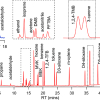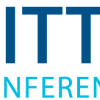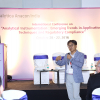According to ISO, a fully accredited certified reference material (CRM) supplier should be accredited to both ISO 17034:2016 and ISO/IEC 17025:2017 Standards. Accreditation to ISO/IEC 17025 is a complex and detailed process: Starna achieved this in 2001 and in doing so became the first commercial supplier accredited to calibrate liquid and glass RMs for UV-visible spectrophotometry. In 2006, they became the first and only supplier of spectrophotometry references accredited to both standards.
A particularly important aspect of these accreditations is their Scope, which defines the range of materials that can be produced as CRMs and the measurements that the calibration laboratory is entitled to perform. A laboratory could claim to be “accredited to ISO/IEC 17025” on the strength of just one measurement, so users should satisfy themselves that a proposed supplier’s Schedule of Accreditation includes the references they intend to purchase.
Furthermore, it is now recommended that instrument qualification measurements are conducted over the operational range required for the analysis. A laboratory performing measurements over a wide wavelength or photometric range will likely require several different CRMs to cover each instrument parameter.
A CRM is defined by ISO as a “Reference Material, characterised by a metrologically valid procedure for one or more specified properties, accompanied by a certificate that provides the value of the specified property, its associated uncertainty, and a statement of metrological traceability”. So, it is important that all CRMs are supplied with a certificate showing the traceability of the certified value to NIST Standard Reference Materials (SRMs) and a statement of the measurement uncertainty, as required by the ISO definition of a CRM.
Nathan Hulme of Starna said “We are committed to the process of continuous improvement demanded by those standards and look forward to another 20 years as the preferred supplier to many of the leading pharmaceutical companies, instrument manufacturers and accredited laboratories worldwide”.
You can learn a lot more about ISO 17034:2016 and ISO/IEC 17025:2017 in John Hammond’s contribution to the Quality Matters column on “Four generations of quality—’Don’t risk it’ Accreditation standards and their role in quality assurance”.






